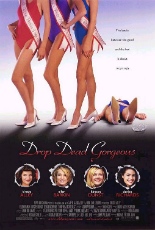
 When it first came out, the dark, beauty-pageant mockumentary Drop Dead Gorgeous was largely dismissed as a fitfully amusing comedy that lacked the improvisatory spontaneity that made the Christopher Guest films that inspired it so unique and special. Today, the film remains rough in some spots, but deserves to be re-evaluated as the rare social satire that has managed to become even more culturally relevant.
When it first came out, the dark, beauty-pageant mockumentary Drop Dead Gorgeous was largely dismissed as a fitfully amusing comedy that lacked the improvisatory spontaneity that made the Christopher Guest films that inspired it so unique and special. Today, the film remains rough in some spots, but deserves to be re-evaluated as the rare social satire that has managed to become even more culturally relevant.
A large part of this is due to Kirstie Alley’s performance as a local Minnesotan pageant director/former beauty queen, who is only too happy to resort to murder to get her daughter into the state finals of the Miss Sarah Rose Cosmetics Pageant. Back in 1999, it seemed like Alley was channeling the dark side of Fargo’s Marge Gunderson (if only because of her accent), but now, it’s impossible to watch and not immediately be reminded of that inexplicable conservative icon Sarah Palin.
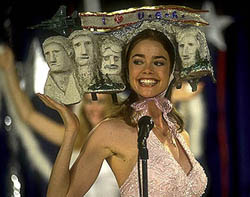 This uncanny coincidence causes the film’s many jabs at conservative “family values” to take on a newfound and occasionally disturbing piquancy. What may have once seemed overly broad now seems unfortunately believable in an age where conservative leaders such as Palin seriously decry the practice of advocating vegetables over junk food to school kids as a form of socialist liberal propaganda.
This uncanny coincidence causes the film’s many jabs at conservative “family values” to take on a newfound and occasionally disturbing piquancy. What may have once seemed overly broad now seems unfortunately believable in an age where conservative leaders such as Palin seriously decry the practice of advocating vegetables over junk food to school kids as a form of socialist liberal propaganda.
It also helps that the film features wonderful early performances from several young actresses who have since gone on to become an Oscar nominee (a nearly unrecognizable Amy Adams, playing a blonde cheerleading sexpot), a blockbuster star (Kirsten Dunst in full-on adorable-saint mode), a tabloid/reality-show train wreck (Denise Richards, whose natural, on-camera vacancy is, for once, used to great comic effect) and a corpse (a sadly underused Brittany Murphy, who has the film’s best throwaway line when she cheerfully admits her parents only had her because her brother needed a kidney).
While still not up to the comedic levels of Best in Show, Waiting for Guffman or A Mighty Wind, Drop Dead Gorgeous deserves to be revisited if only to appreciate how much can change and stay the same in the span of a decade. —Allan Mott

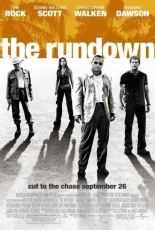
 Coming not-so-fresh off
Coming not-so-fresh off 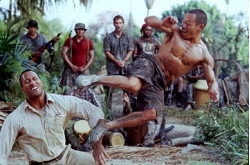 So The Rock and Scott get to bicker and spar like
So The Rock and Scott get to bicker and spar like 
 At a time before the word “horror” even had a translated equivalent in Japan, writer/director Nobuo Nakagawa gave the country something to be all shook up about: a cinematic trip to Hell, and one full of gore of that!
At a time before the word “horror” even had a translated equivalent in Japan, writer/director Nobuo Nakagawa gave the country something to be all shook up about: a cinematic trip to Hell, and one full of gore of that! 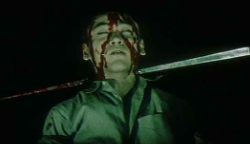 Finally, with a little more than half an hour to spare in the running time, he goes to Hell. Worse, Buddhists believe in a Hell comprised of eight Hells, so buckle up! Upon arrival, he gets his throat pierced, has to view a Your Life’s Greatest Fuck-Ups reel and learns just how hot flames of eternity can be. Shirô gets the 25-cent tour and sees the newly dead being flayed, boiled and spiked for punishment — different strokes for different folks, all rather graphically depicted with lots of red acrylic paint.
Finally, with a little more than half an hour to spare in the running time, he goes to Hell. Worse, Buddhists believe in a Hell comprised of eight Hells, so buckle up! Upon arrival, he gets his throat pierced, has to view a Your Life’s Greatest Fuck-Ups reel and learns just how hot flames of eternity can be. Shirô gets the 25-cent tour and sees the newly dead being flayed, boiled and spiked for punishment — different strokes for different folks, all rather graphically depicted with lots of red acrylic paint. 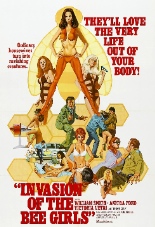
 Thanks to the talents of the filmmakers involved (especially screenwriter Nicholas Meyer, who would go on to make both
Thanks to the talents of the filmmakers involved (especially screenwriter Nicholas Meyer, who would go on to make both  While I admit it is easy to interpret a film in which a group of sexually alluring women are compelled to engage in a mating ritual that causes their male partners to suffer fatal heart attacks as a sly commentary on the then-growing women’s liberation movement, it actually takes quite a bit of mental trickery to justify that interpretation based solely on the movie’s content. Tonally, Bee Girls never feels tongue-in-cheek, and if it were supposed to, then the attempted rape scene in its middle is more than simply gratuitous, but completely inappropriate as well.
While I admit it is easy to interpret a film in which a group of sexually alluring women are compelled to engage in a mating ritual that causes their male partners to suffer fatal heart attacks as a sly commentary on the then-growing women’s liberation movement, it actually takes quite a bit of mental trickery to justify that interpretation based solely on the movie’s content. Tonally, Bee Girls never feels tongue-in-cheek, and if it were supposed to, then the attempted rape scene in its middle is more than simply gratuitous, but completely inappropriate as well.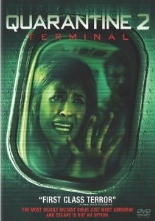
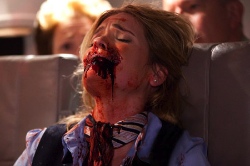 One emergency landing later, the remaining passengers and crew disembark into a terminal that’s sealed off from the airport. They’re flat-out stuck, which wouldn’t necessarily be bad if the infected weren’t hiding in the shadows, either. The behind-the-scenes luggage area gives newbie director (and
One emergency landing later, the remaining passengers and crew disembark into a terminal that’s sealed off from the airport. They’re flat-out stuck, which wouldn’t necessarily be bad if the infected weren’t hiding in the shadows, either. The behind-the-scenes luggage area gives newbie director (and